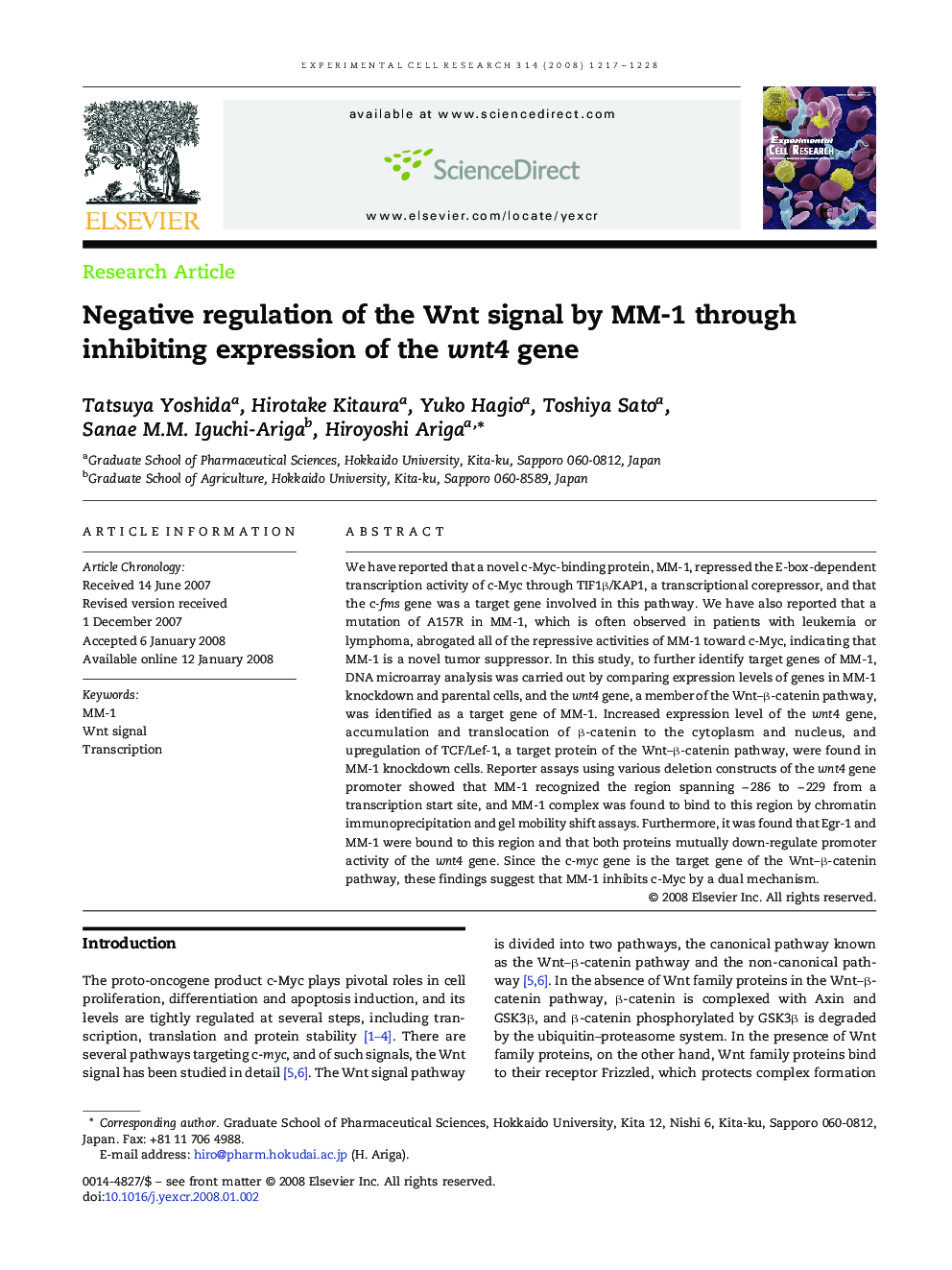| Article ID | Journal | Published Year | Pages | File Type |
|---|---|---|---|---|
| 2132098 | Experimental Cell Research | 2008 | 12 Pages |
We have reported that a novel c-Myc-binding protein, MM-1, repressed the E-box-dependent transcription activity of c-Myc through TIF1β/KAP1, a transcriptional corepressor, and that the c-fms gene was a target gene involved in this pathway. We have also reported that a mutation of A157R in MM-1, which is often observed in patients with leukemia or lymphoma, abrogated all of the repressive activities of MM-1 toward c-Myc, indicating that MM-1 is a novel tumor suppressor. In this study, to further identify target genes of MM-1, DNA microarray analysis was carried out by comparing expression levels of genes in MM-1 knockdown and parental cells, and the wnt4 gene, a member of the Wnt–β-catenin pathway, was identified as a target gene of MM-1. Increased expression level of the wnt4 gene, accumulation and translocation of β-catenin to the cytoplasm and nucleus, and upregulation of TCF/Lef-1, a target protein of the Wnt–β-catenin pathway, were found in MM-1 knockdown cells. Reporter assays using various deletion constructs of the wnt4 gene promoter showed that MM-1 recognized the region spanning − 286 to − 229 from a transcription start site, and MM-1 complex was found to bind to this region by chromatin immunoprecipitation and gel mobility shift assays. Furthermore, it was found that Egr-1 and MM-1 were bound to this region and that both proteins mutually down-regulate promoter activity of the wnt4 gene. Since the c-myc gene is the target gene of the Wnt–β-catenin pathway, these findings suggest that MM-1 inhibits c-Myc by a dual mechanism.
